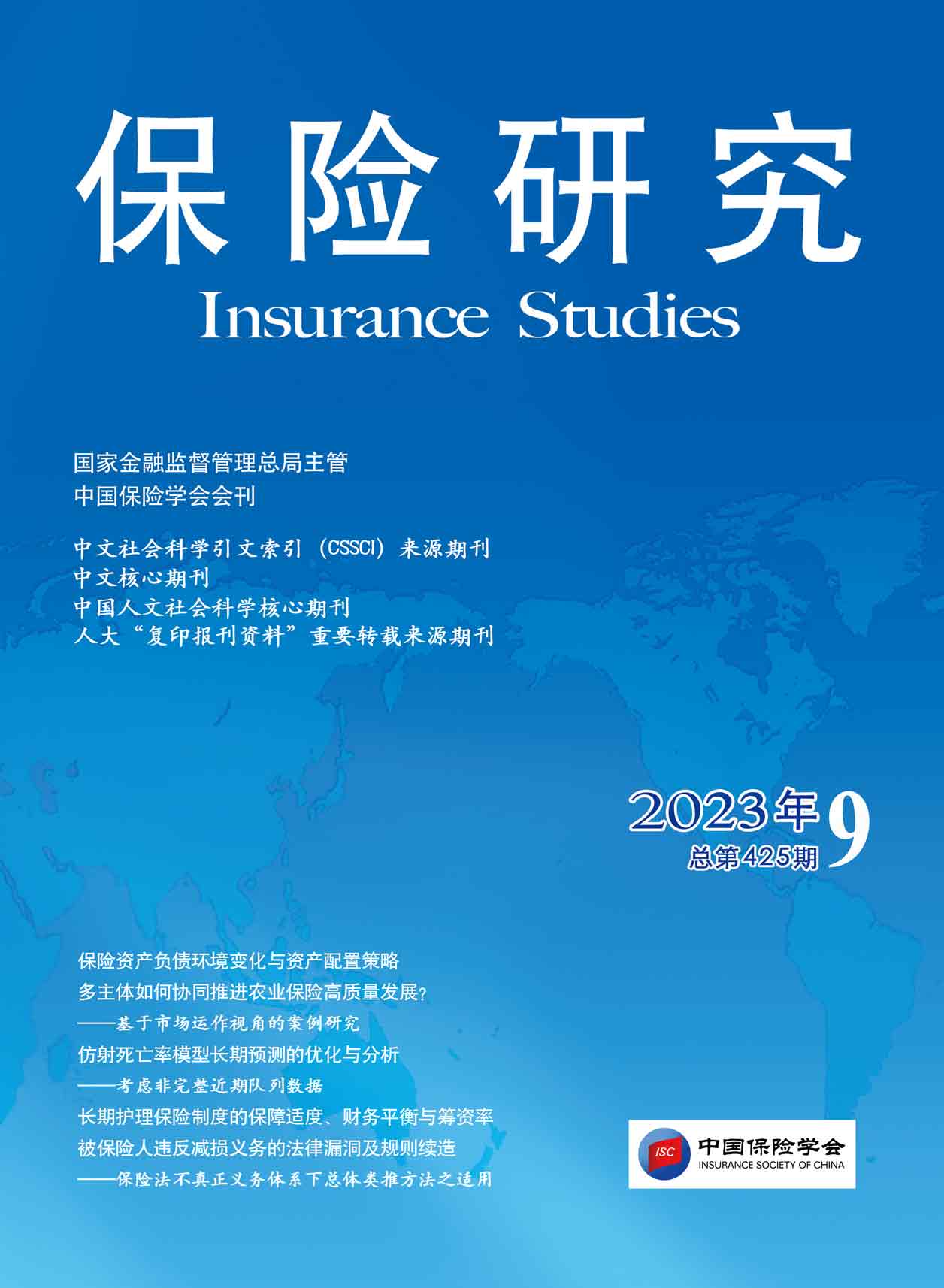
《保险研究》20230902-《风险态度的稳定性——来自研究文献和微观数据库的检验》(易祯)
[中图分类号]F840[文献标识码]A[文章编号]1004-3306(2023)09-0012-20 DOI:10.13497/j.cnki.is.2023.09.002
资源价格:30积分
- 内容介绍
[摘 要]风险态度是稳定的吗?在保险经济学理论建模时,决策主体的风险态度常用风险厌恶系数来描述,这一系数多设定为常数,其中隐含的假设是,风险态度在不同时间和不同群体中保持稳定。本文分别采用手工整理的46篇测算中国和美国风险态度的文献数据库,以及CFPS和CHFS两个微观调查数据库,来重新检验这一假设。研究发现:第一,文献元分析显示,不同文献测算的风险态度差异明显,表现出时间维度、测算方法和群体三方面的异质性。第二,微观调查结果显示,在时间维度上,风险态度相关系数低于0.3;在方法维度上,不同测算方法下的风险态度之间的相关系数低于0.1;在群体维度上,风险态度在特定群体内和在群体之间均不稳定,而且在控制家庭财务决策者、家庭平均和家庭整体3个层面的7类特征后,风险态度依旧不稳定。进一步地,本文还发现:年龄、健康状况、就业状况会影响风险态度,这也是后者变化的根源。本文的经验证据显示,保险经济学理论建模设定风险态度为常数是一个强假设,需放松以更准确刻画现实和设计保险产品。此外,由于风险态度易受外生冲击的诱导,短期内消费者可能做出非理性行为,这就要求保险产品设计中要更加重视消费者保护。
[关键词]风险态度;风险厌恶;稳定性;异质性
[基金项目]国家自然科学基金青年项目“人口老龄化下的偏好调整与资产价格研究”(72103145)。
[作者简介]易祯,首都经济贸易大学金融学院讲师、博士。
Stability of Risk Attitudes:Tests from Research Literature and Microdata
YI Zhen
Abstract:Is risk attitude stable? In the theoretical modeling of insurance economics,the risk aversion coefficient is often used to describe the risk attitude of decision-makers,and this coefficient is mostly set as a constant.The implicit assumption of this setting is that risk attitudes remain stable at different time and among different groups.In this paper,we re-test this hypothesis by using 46 manually compiled literature databases for measuring risk attitudes in China and the United States,as well as two micro-survey databases,CFPS and CHFS.The literature meta-analysis shows that risk attitudes measured by different literature are significantly different,showing heterogeneity in three dimensions:time dimension,measurement method,and group.The micro-survey results show that the correlation coefficient of risk attitude is less than 0.3 in the time dimension.The correlation coefficient between risk attitudes under different measurement methods is less than 0.1.Moreover,risk attitudes are unstable within specific groups and between groups.After controlling seven characteristics of family financial decision-makers,family average,and family overall,the risk attitude is still unstable.We also find that age,health status,and employment status affect risk attitudes,which are also the root cause of changes in the latter.
Key words:risk attitude; risk aversion; stability; heterogeneity
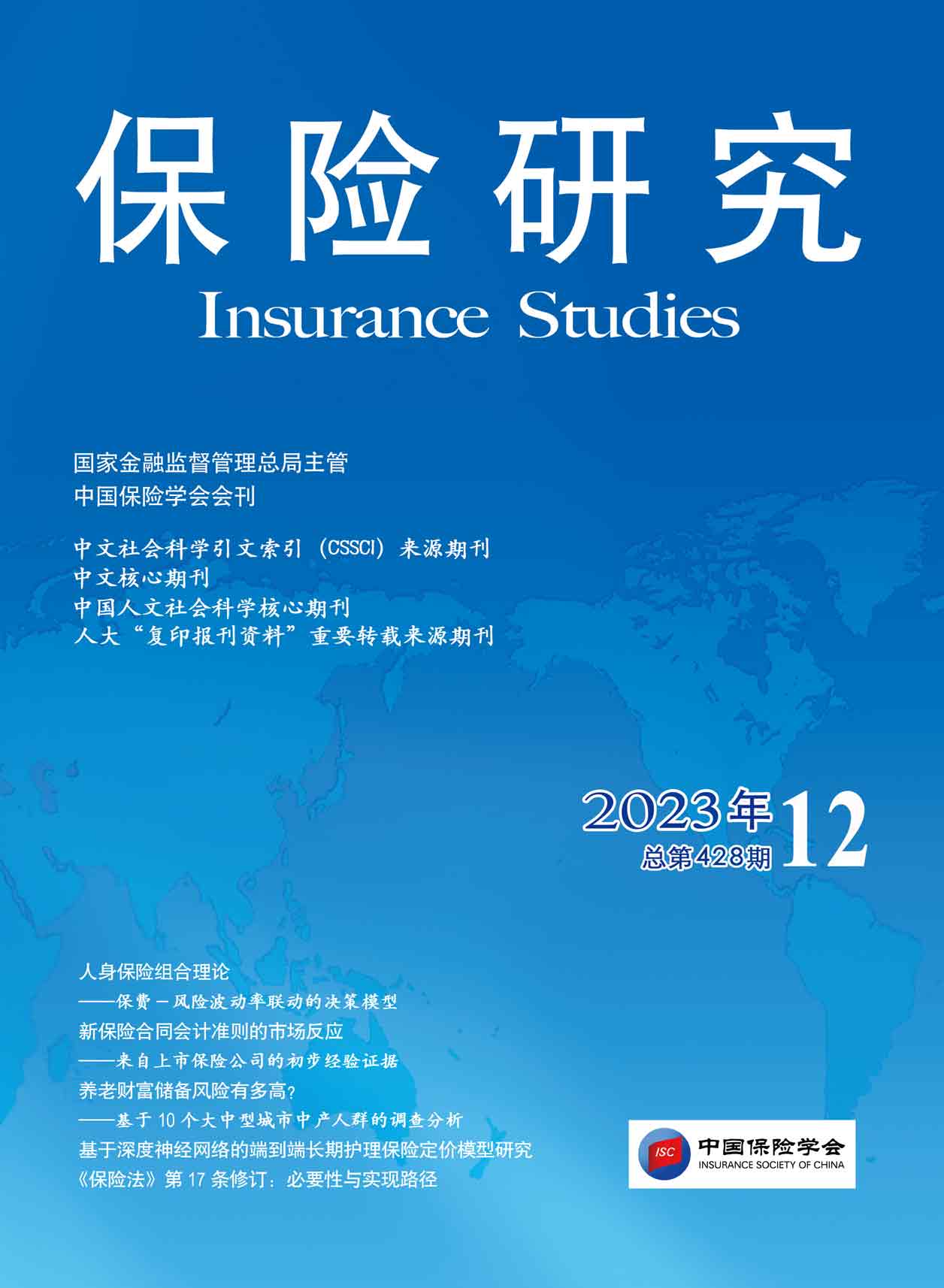
《保险研究》20231201-《人身保险组合理论——保费-风险波动率联动的决策模型》(张程、范雨文、曹铸、王洪彬)
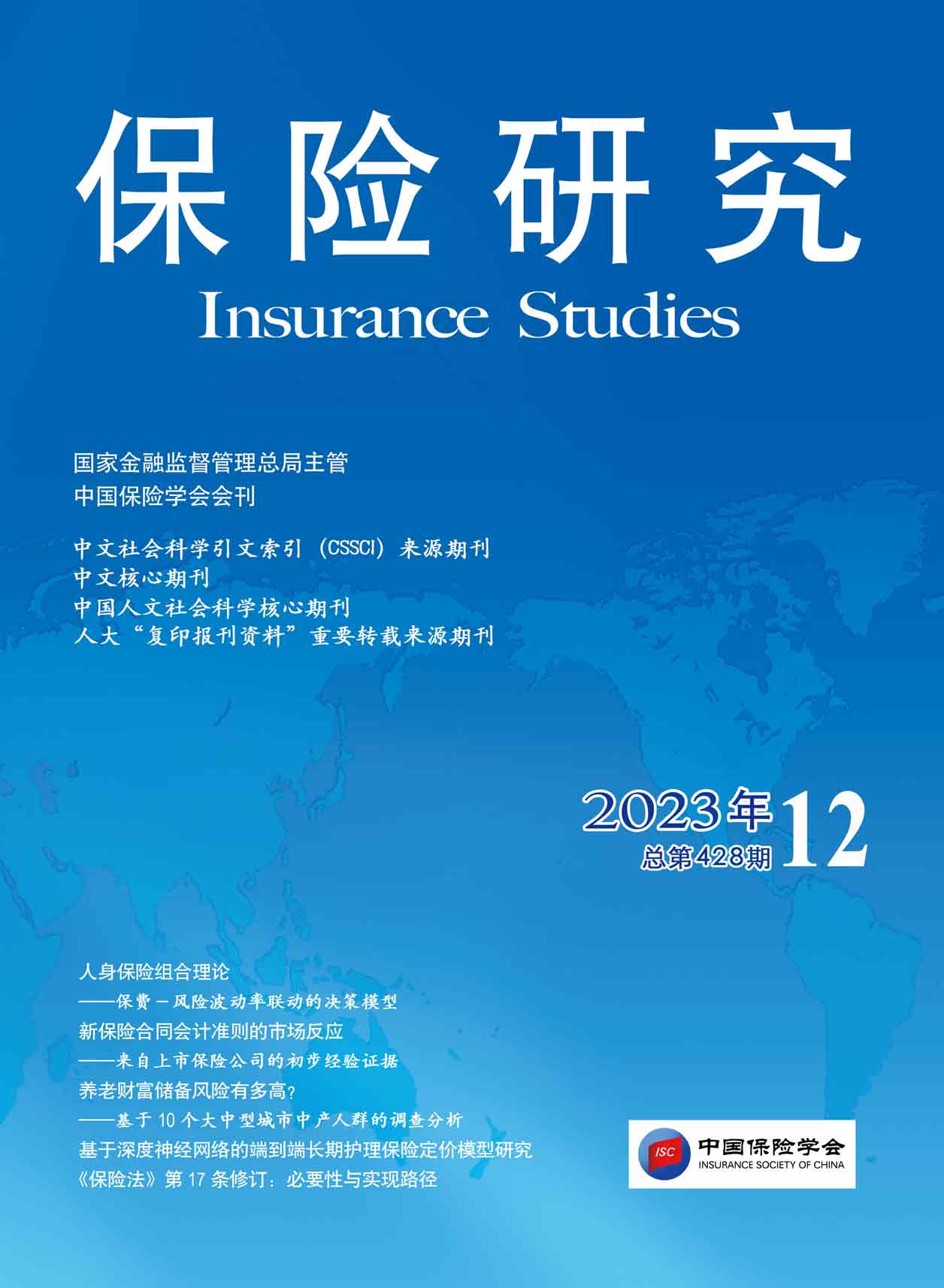
《保险研究》20231202-《新保险合同会计准则的市场反应——来自上市保险公司的初步经验证据》(彭雪梅、段伊雪、王佳)
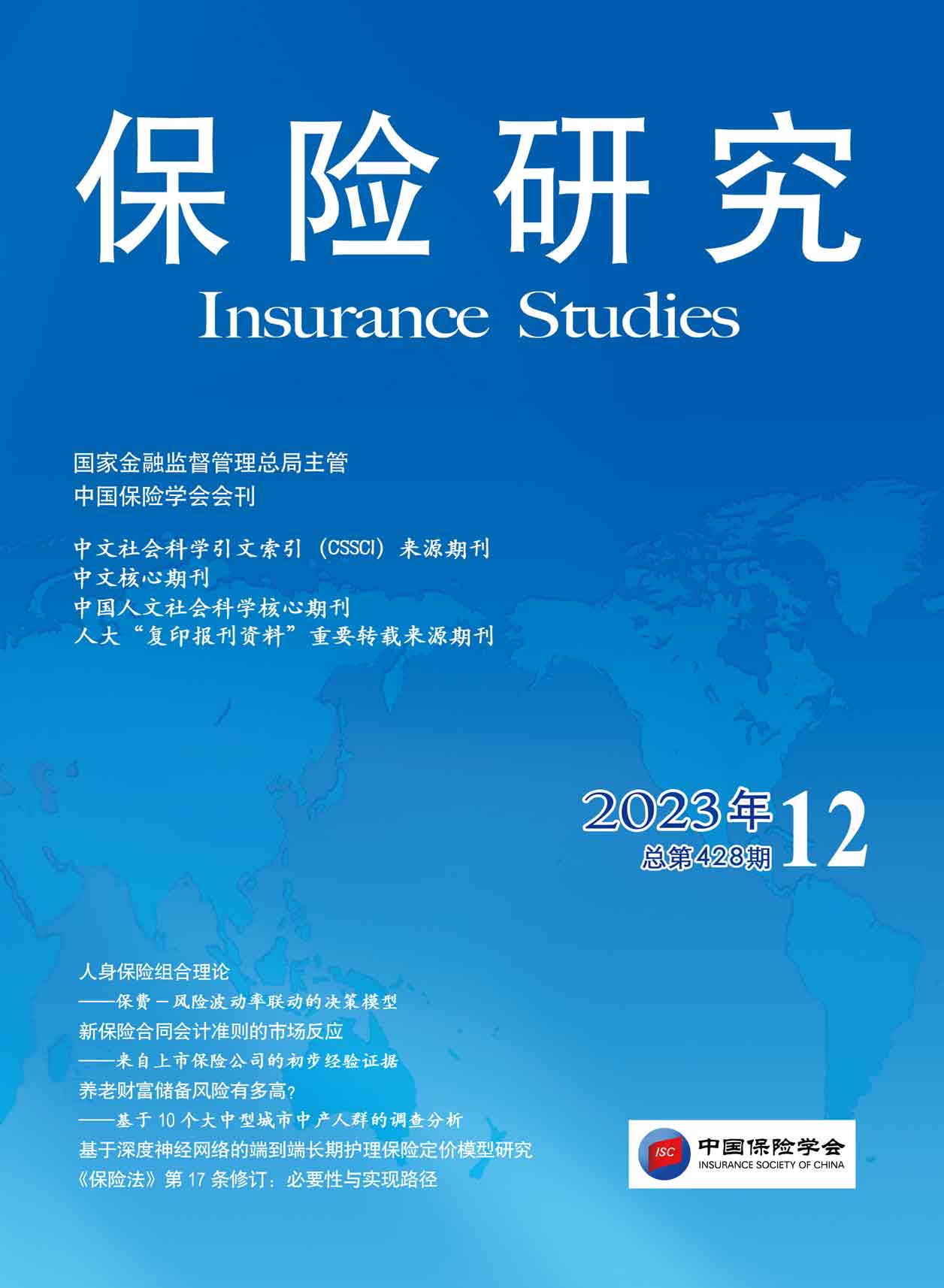
《保险研究》20231203-《套期保值效果与“保险+期货”赔付合理性——基于玉米和大豆试点项目的实证分析》(鞠荣华、顾巧静)
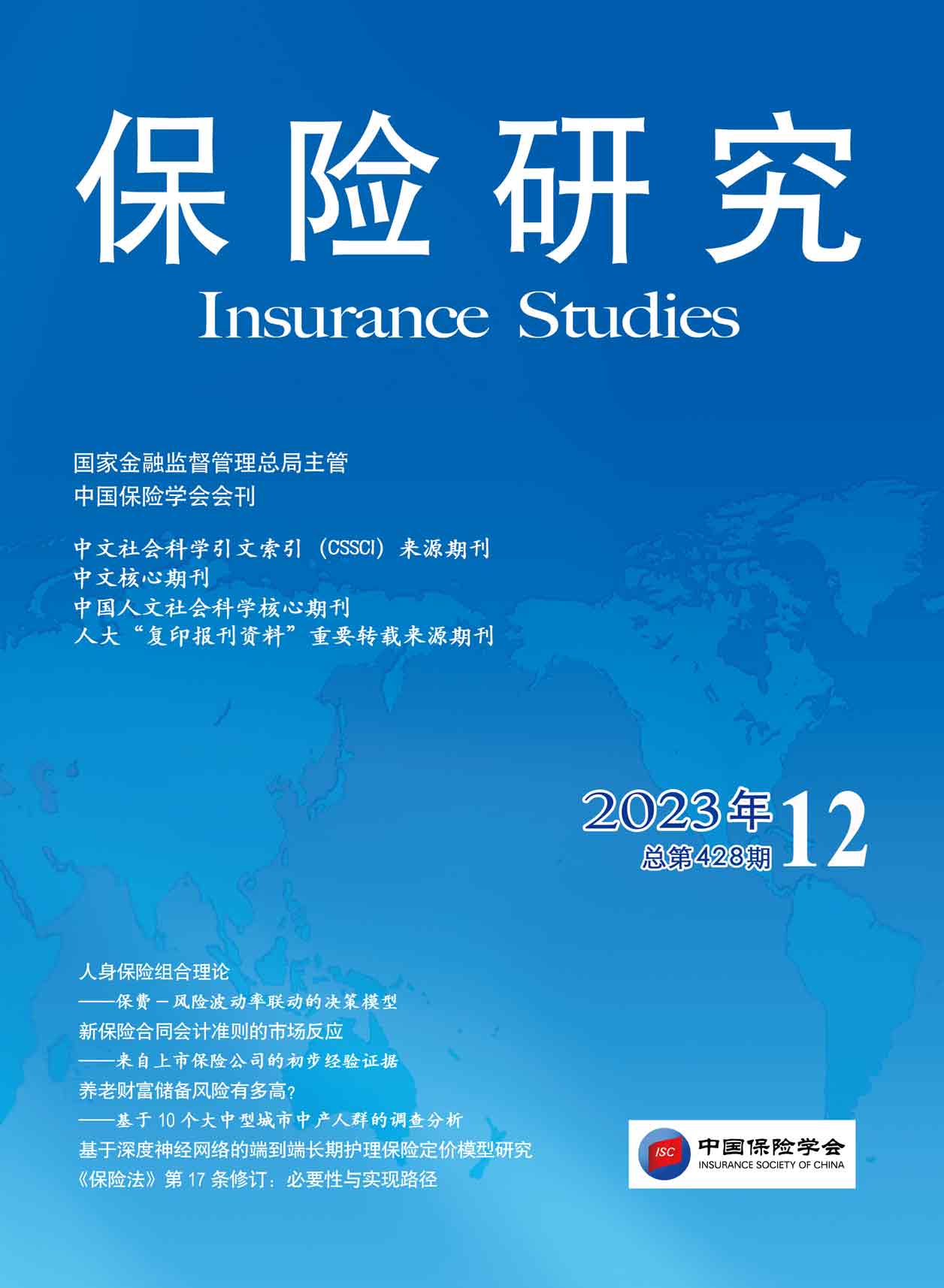
《保险研究》20231204-《养老财富储备风险有多高?——基于10个大中型城市中产人群的调查分析》(冯扬、房连泉)
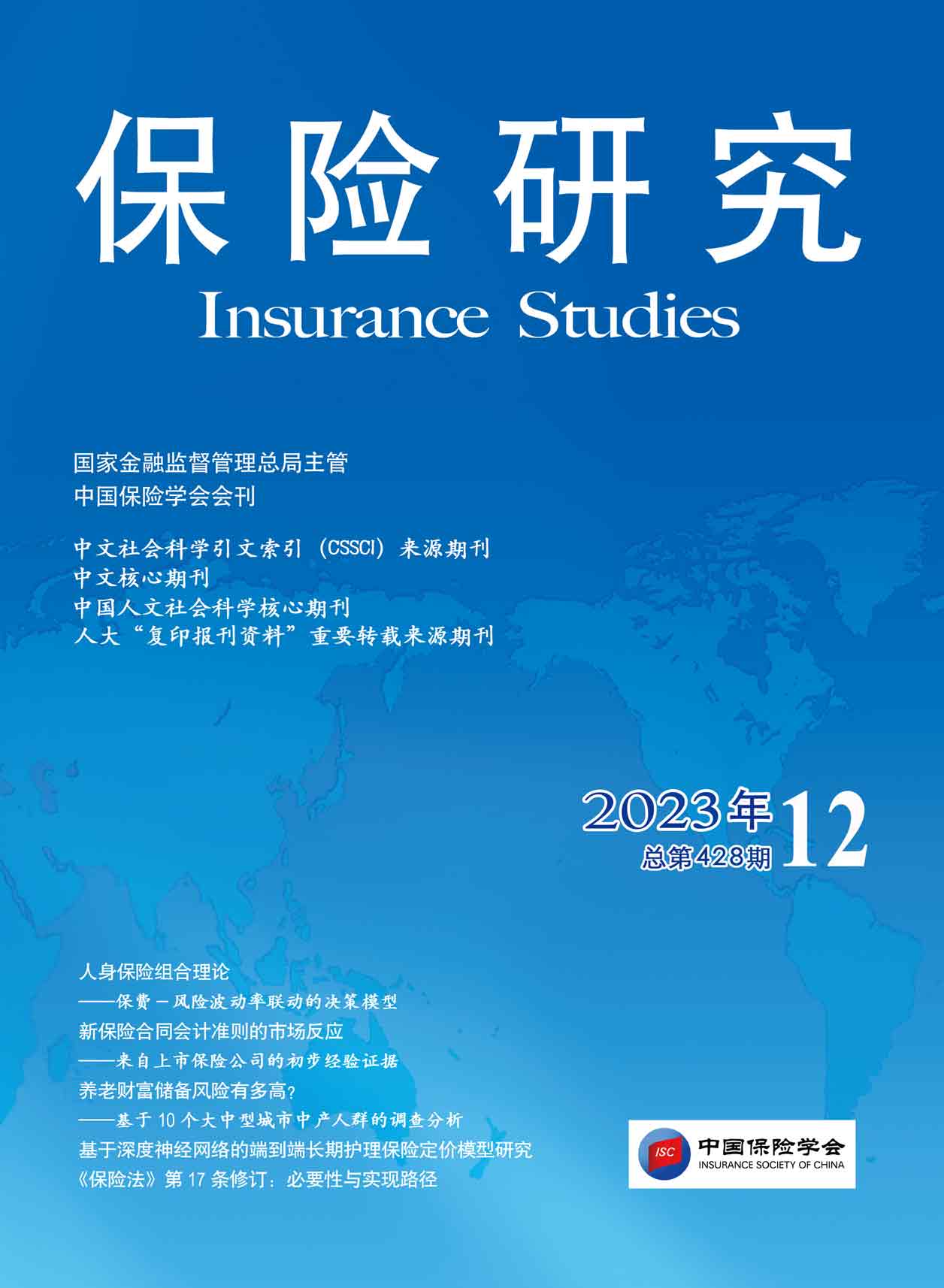
《保险研究》20231205-《社保基金持股对企业ESG改善的实证分析》(杜秋萱、姜岩、侯德帅)
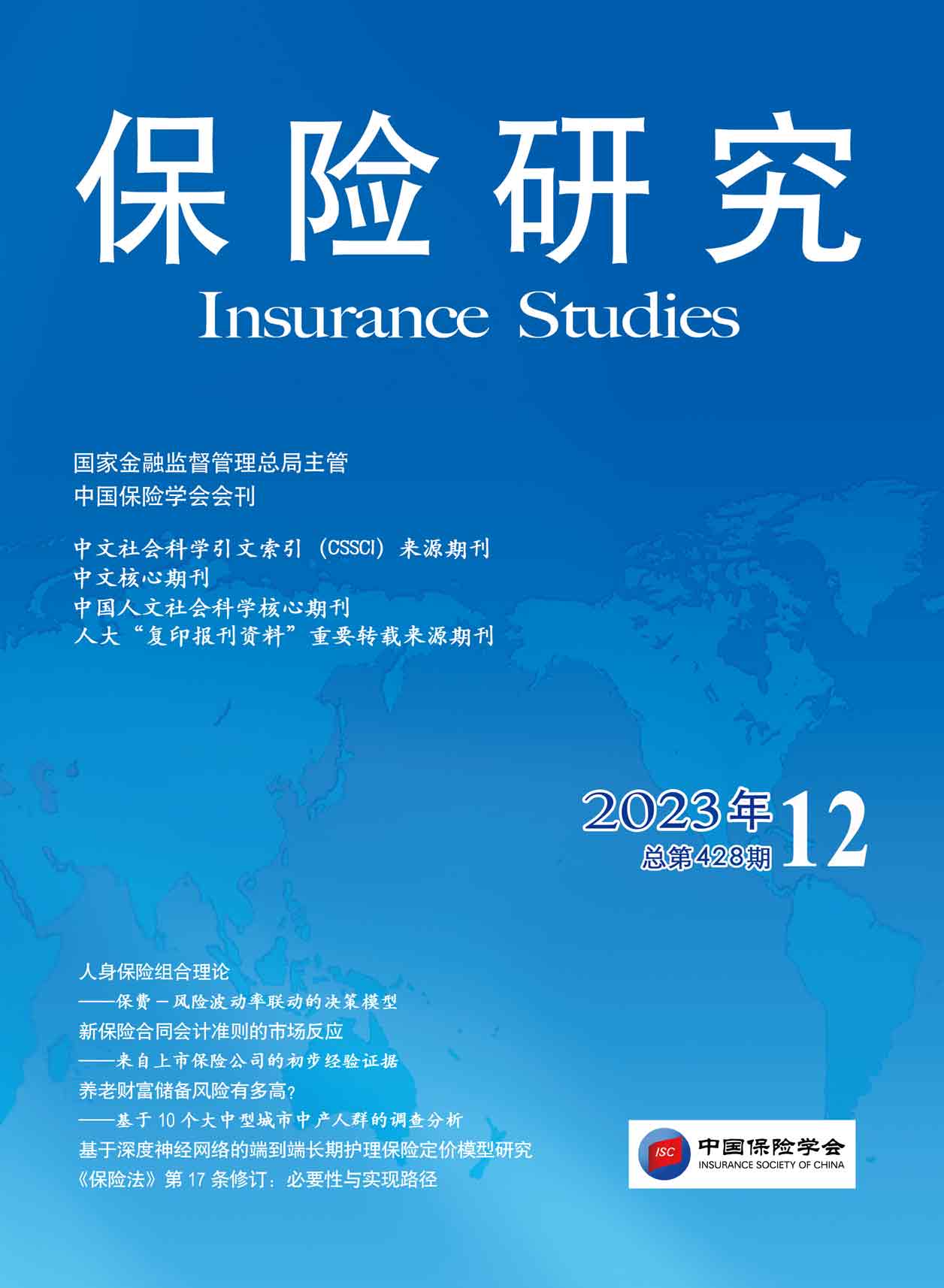
《保险研究》20231206-《基于深度神经网络的端到端长期护理保险定价模型研究》(仇春涓、刘守贤、 张楠)
